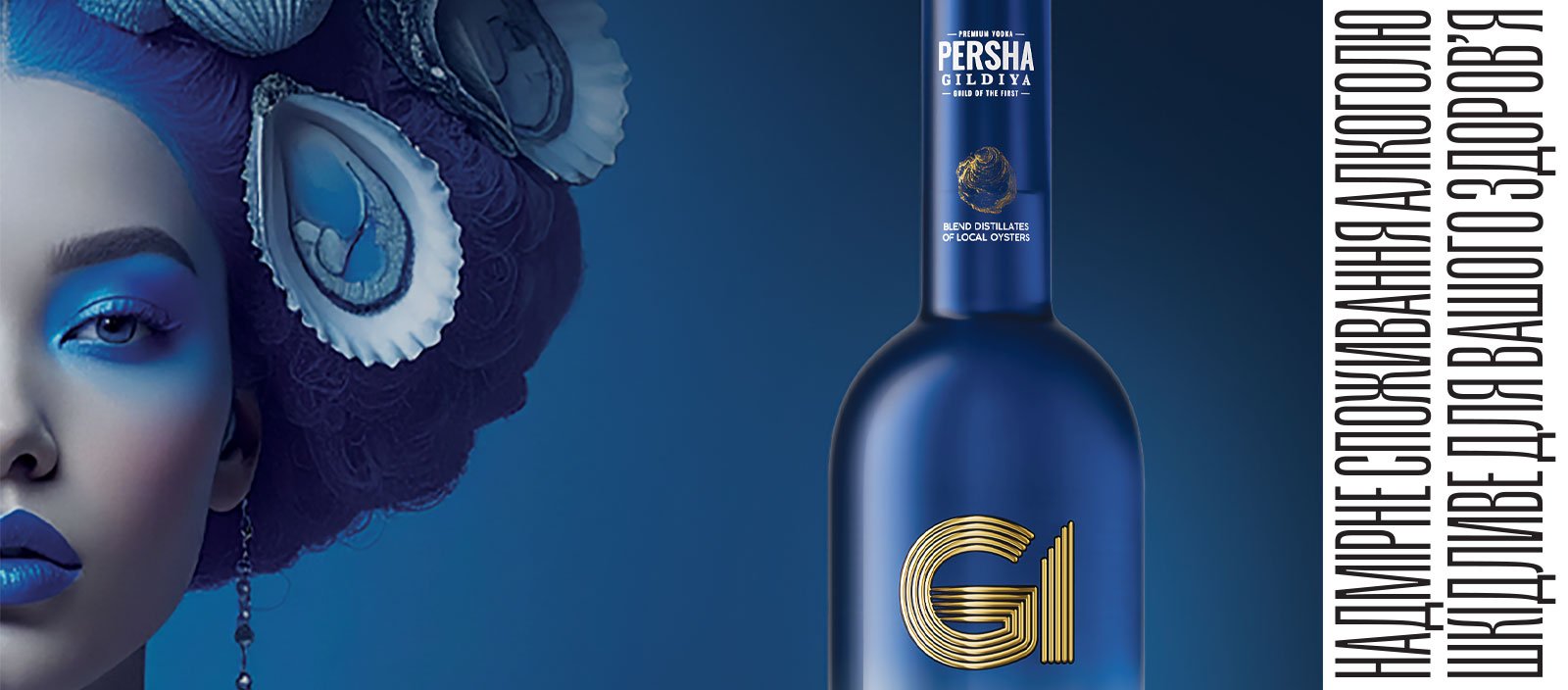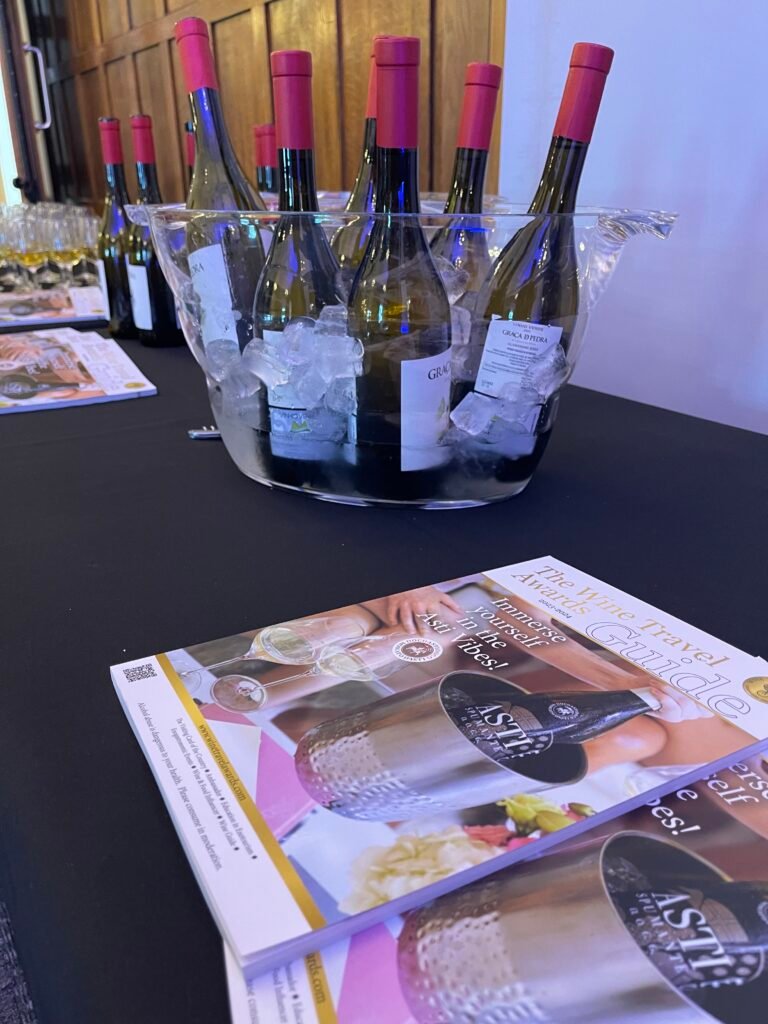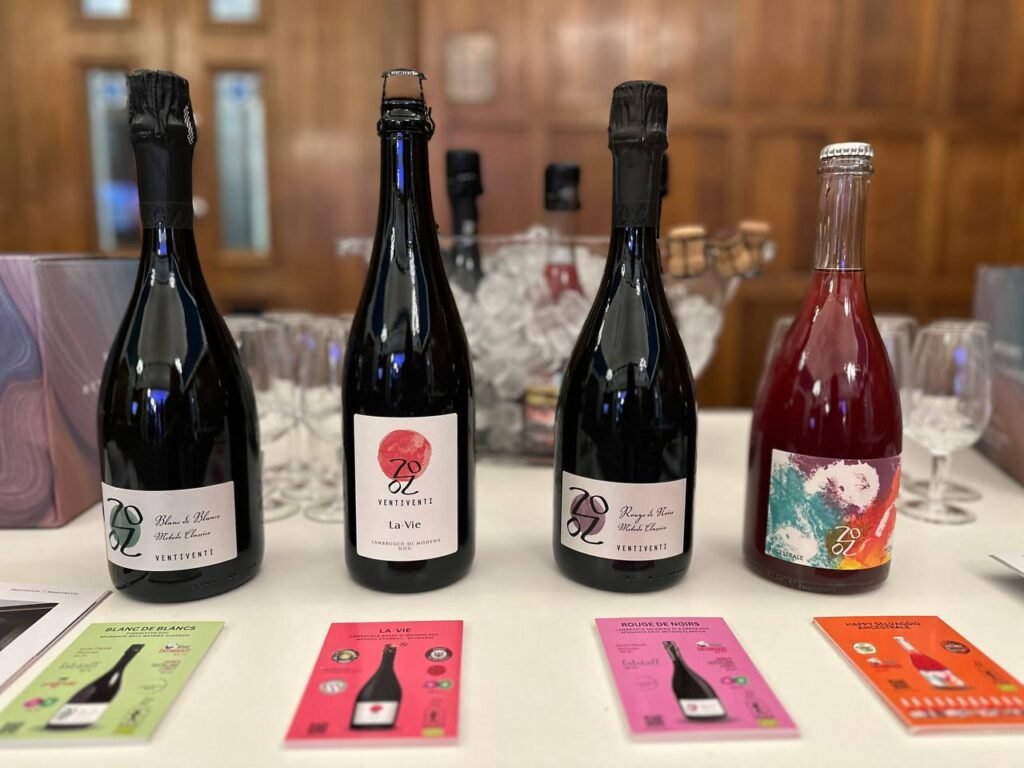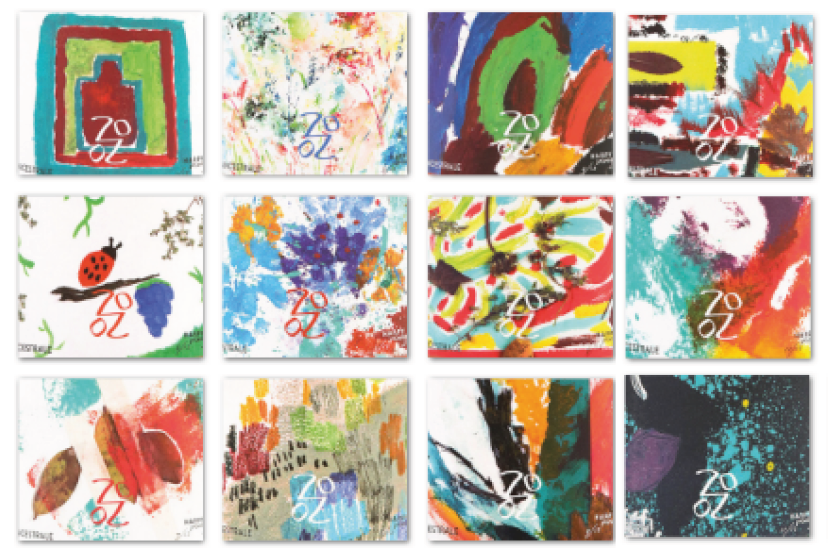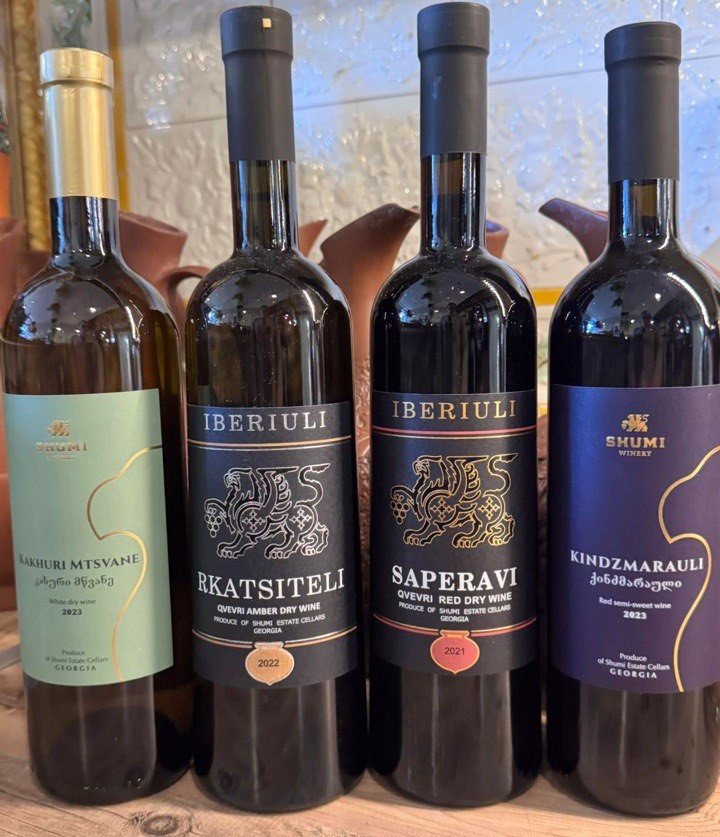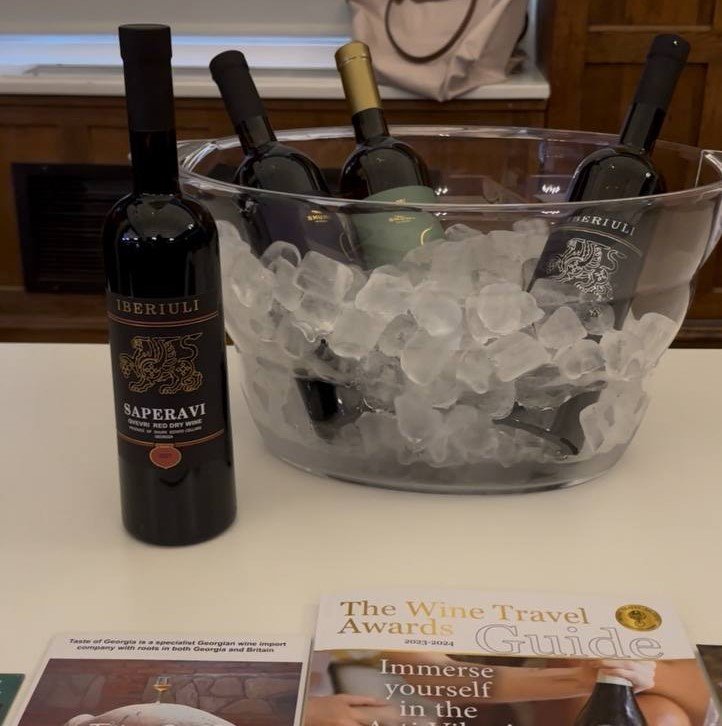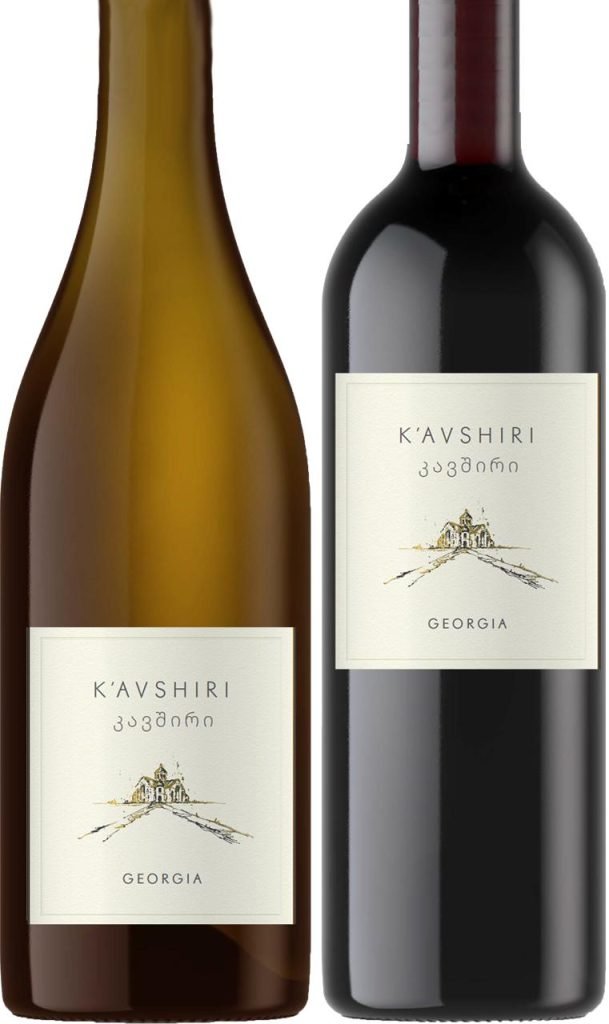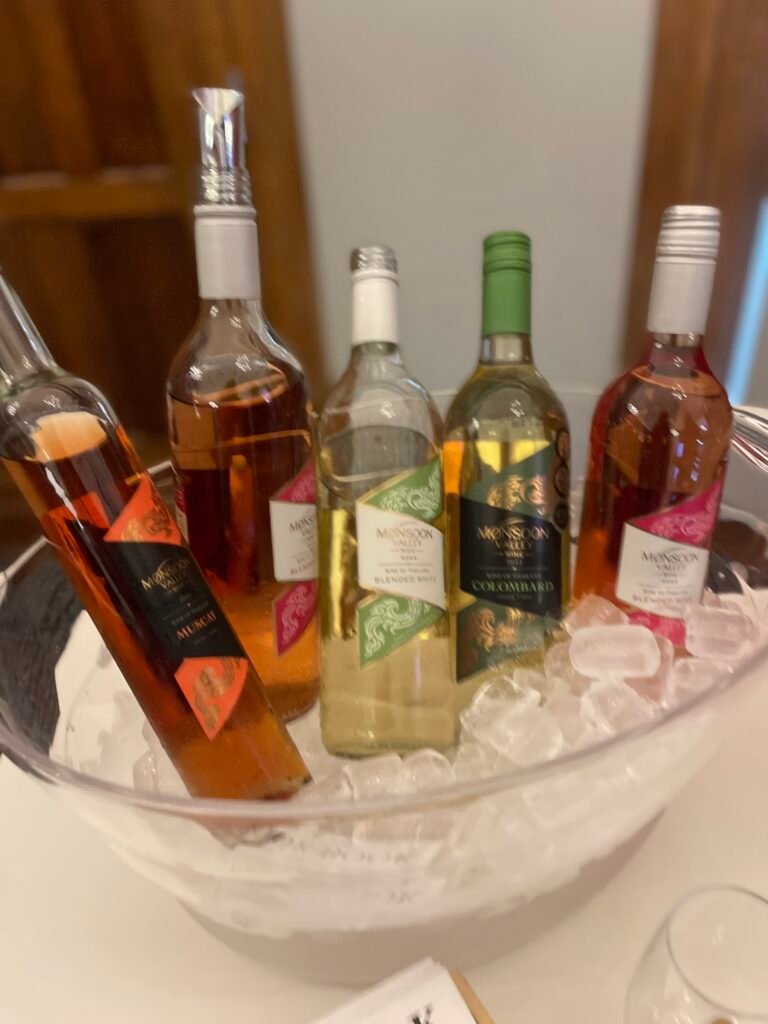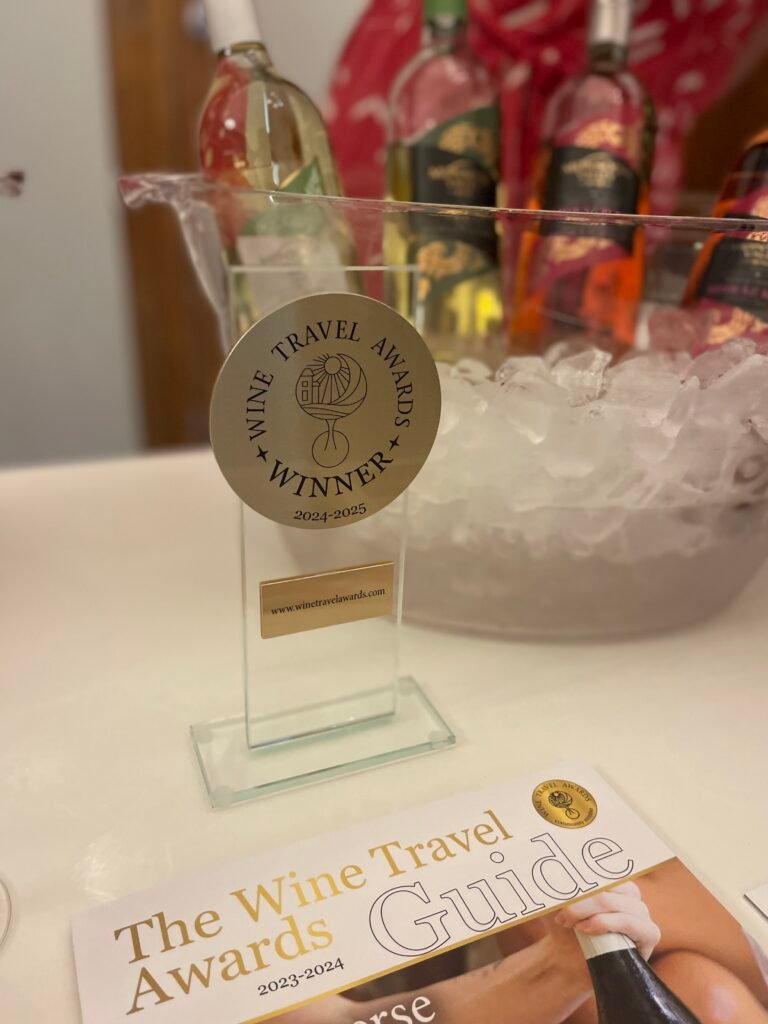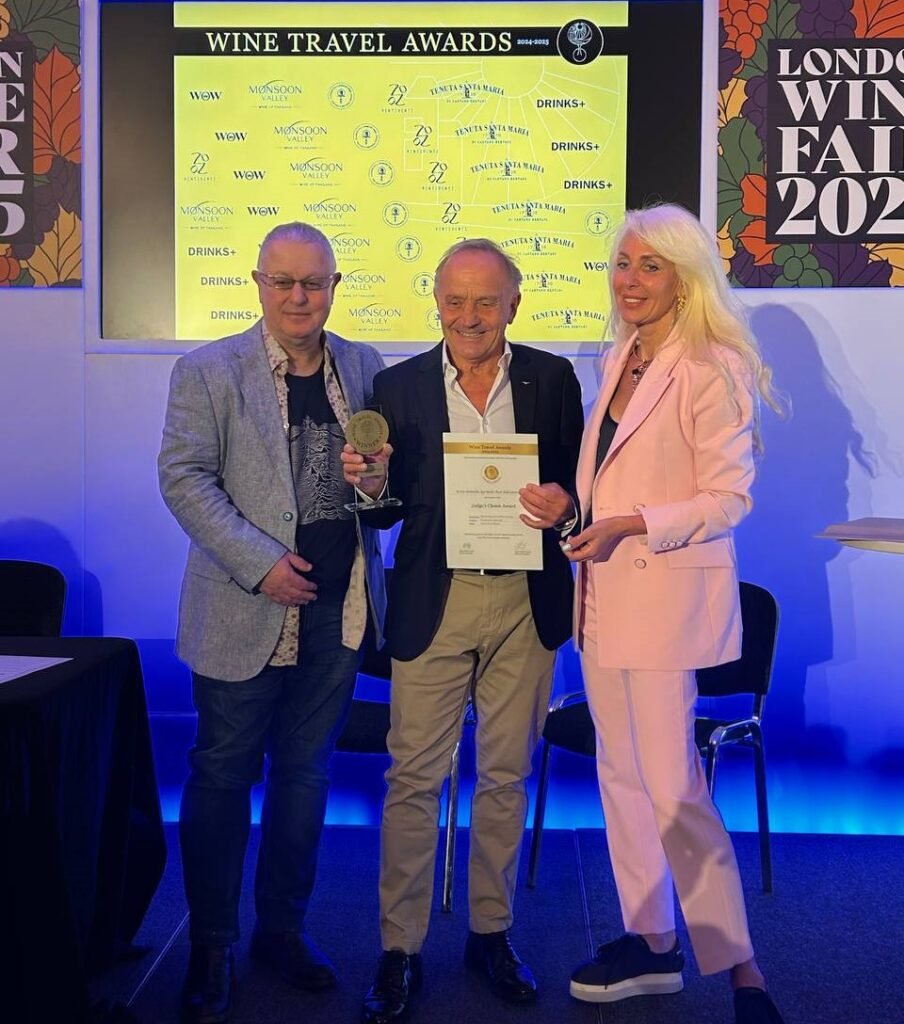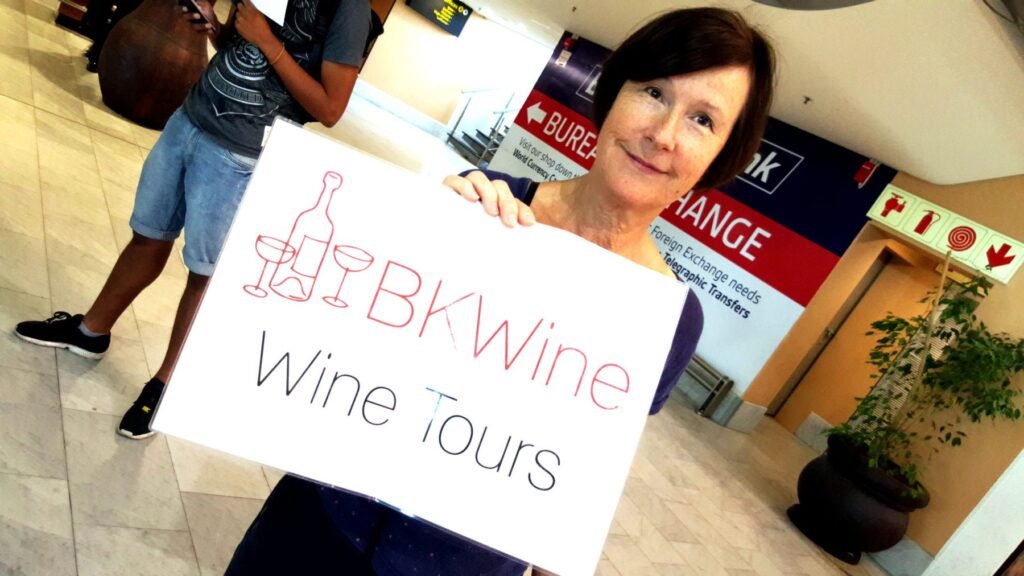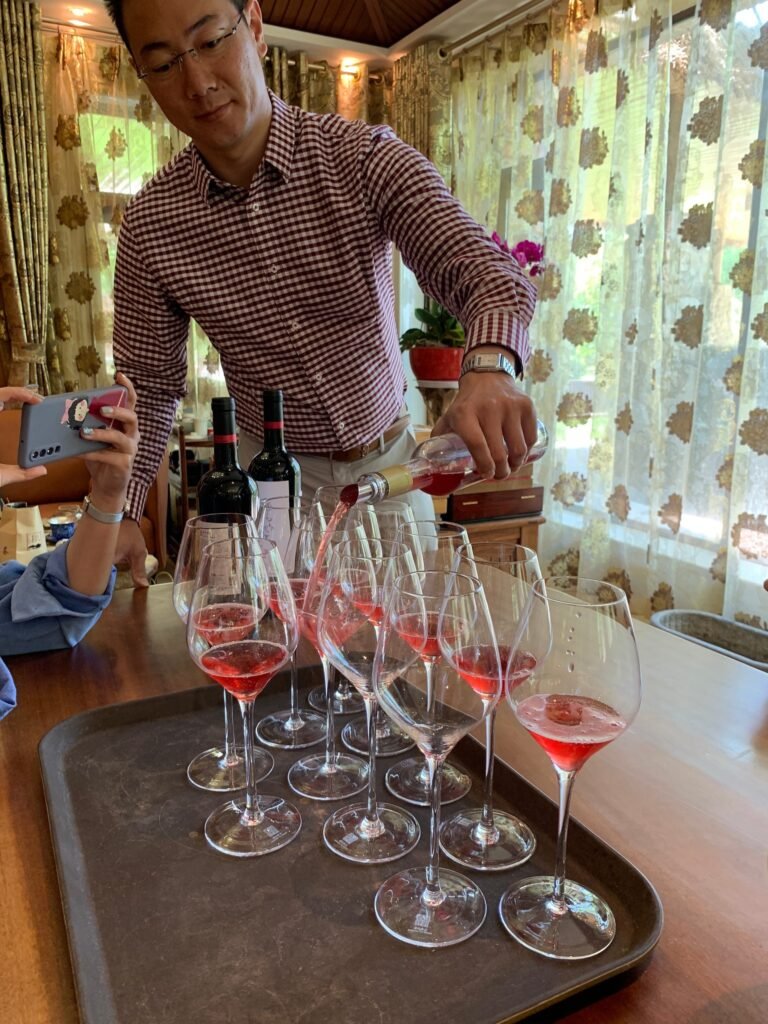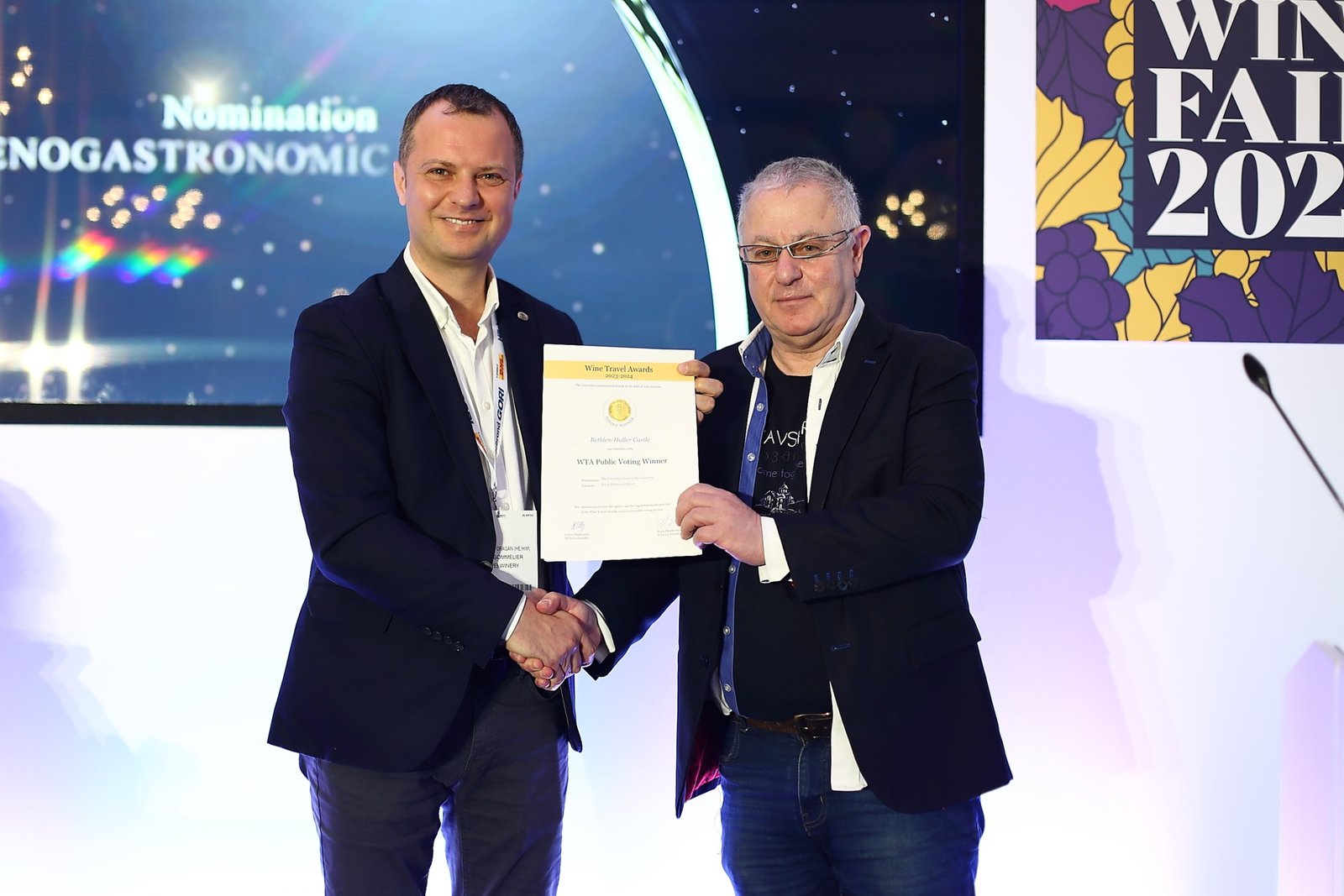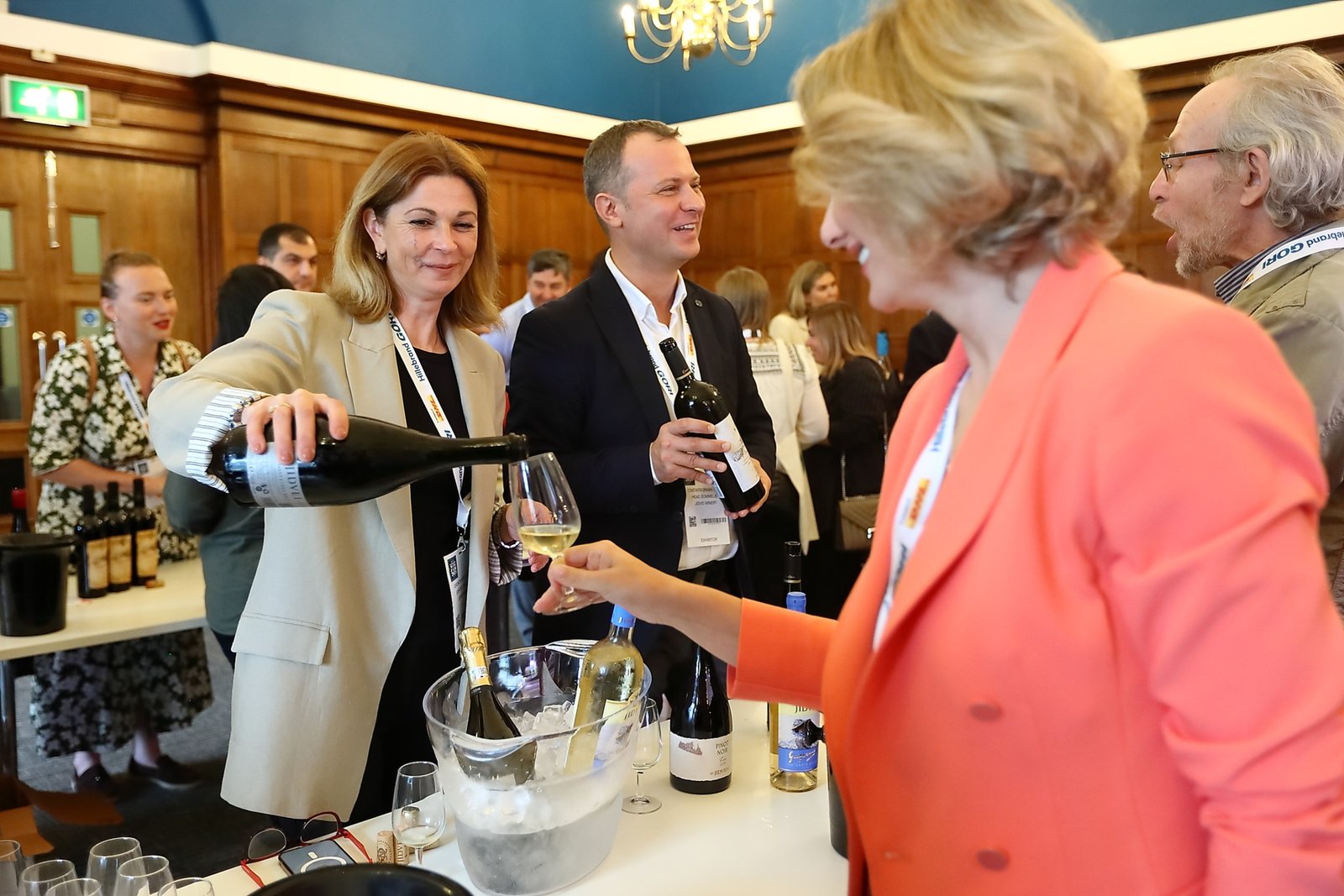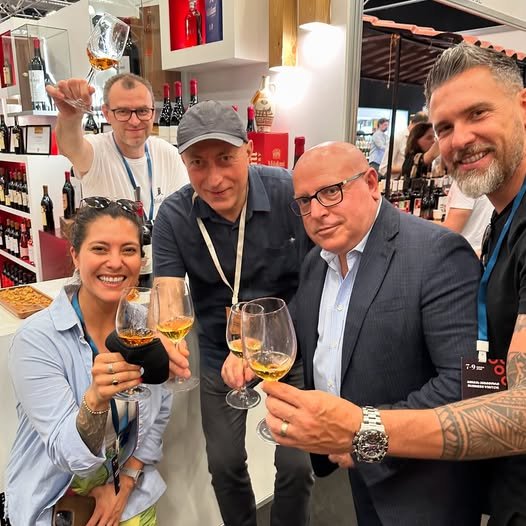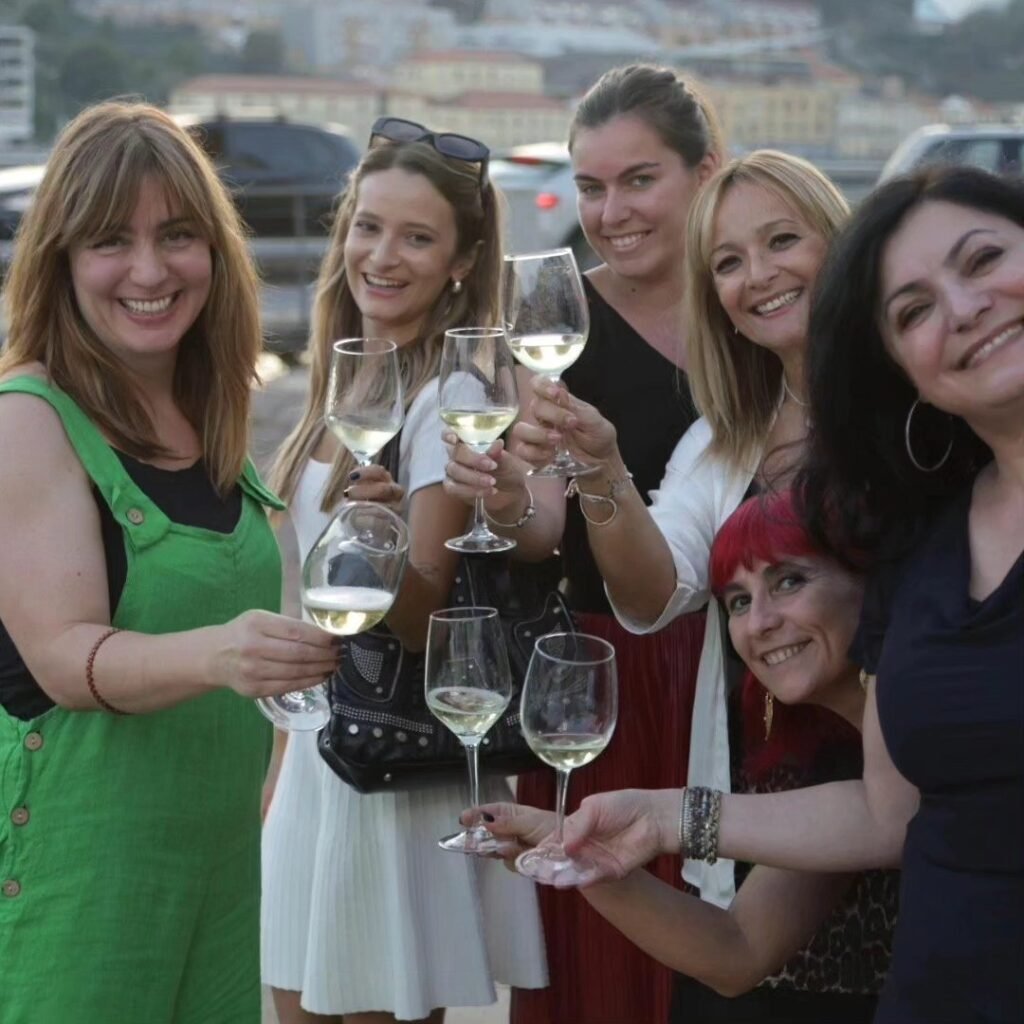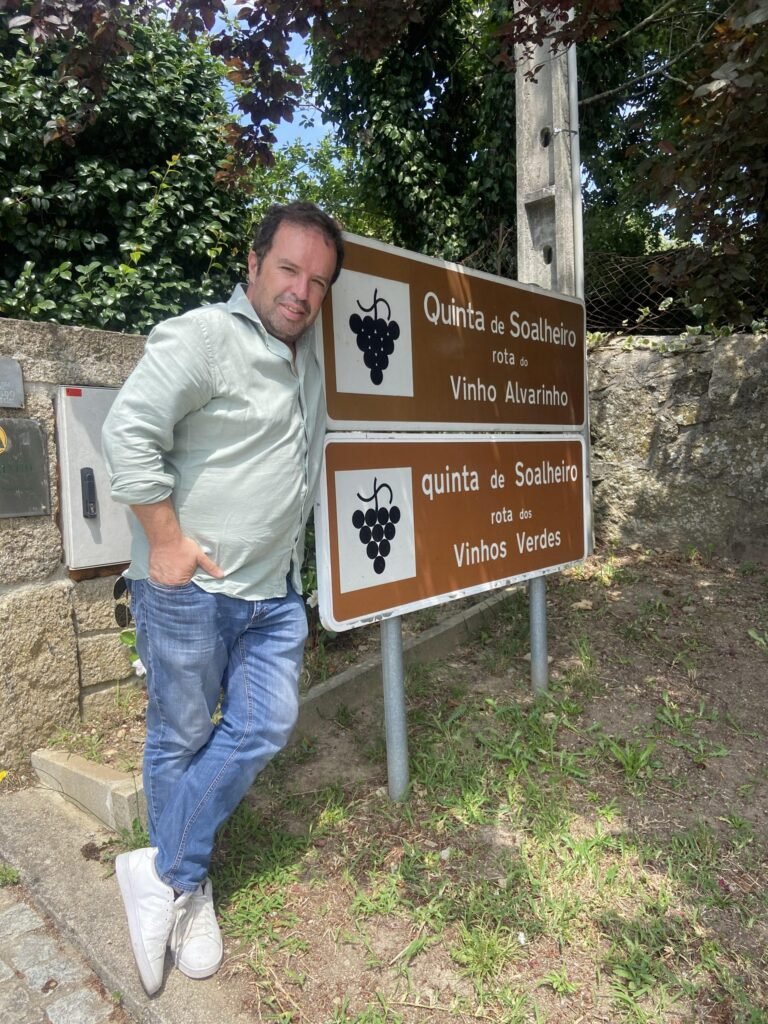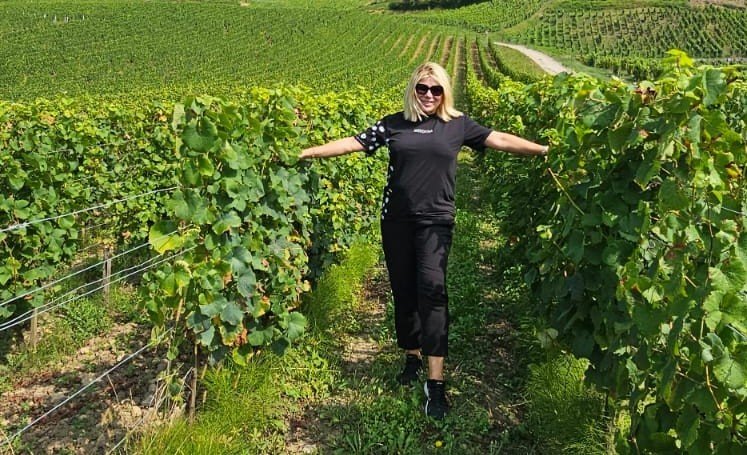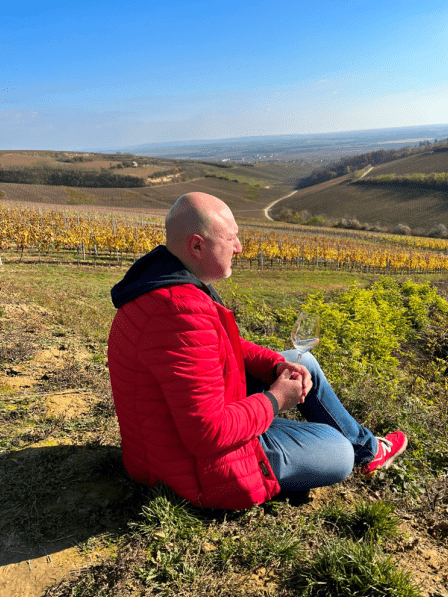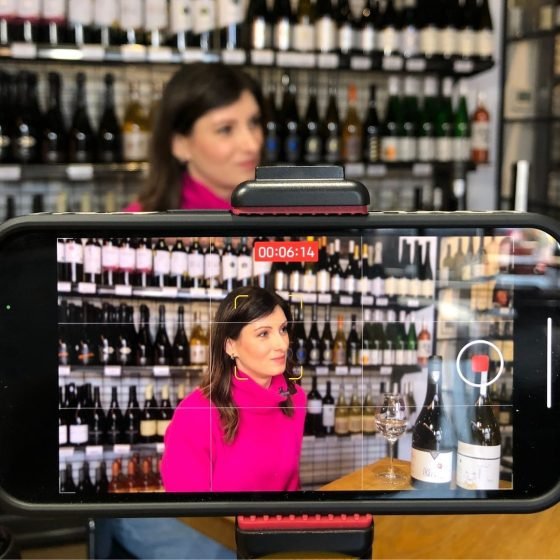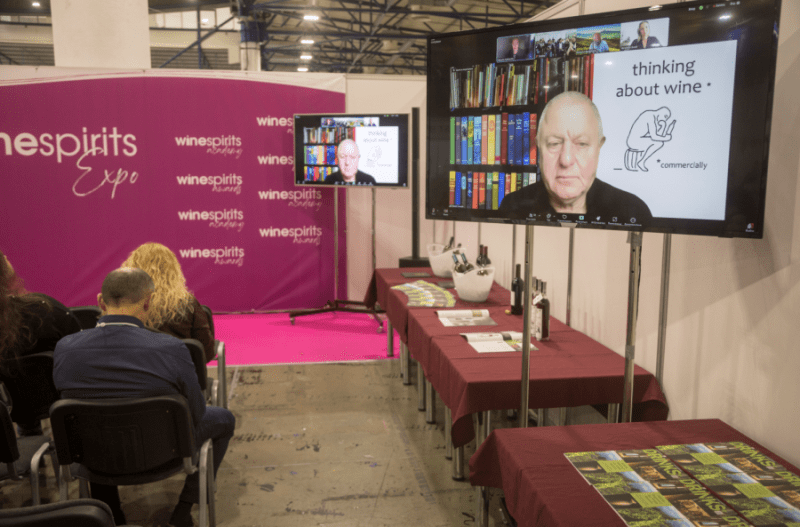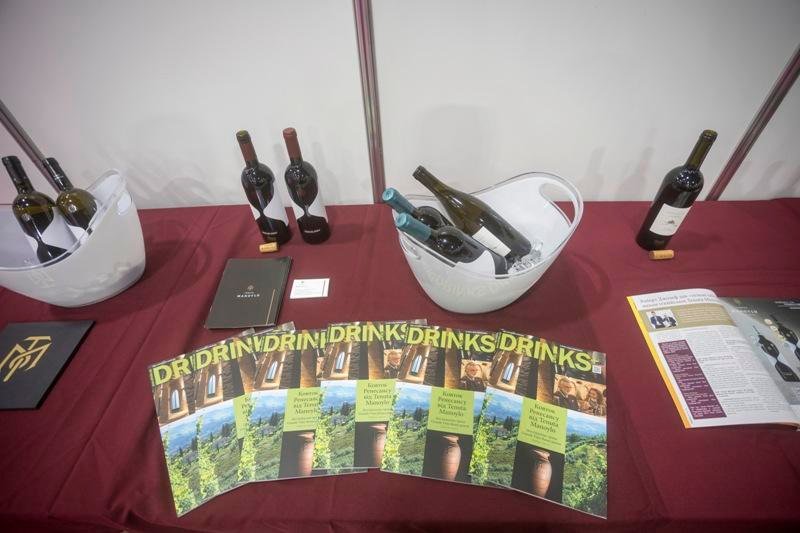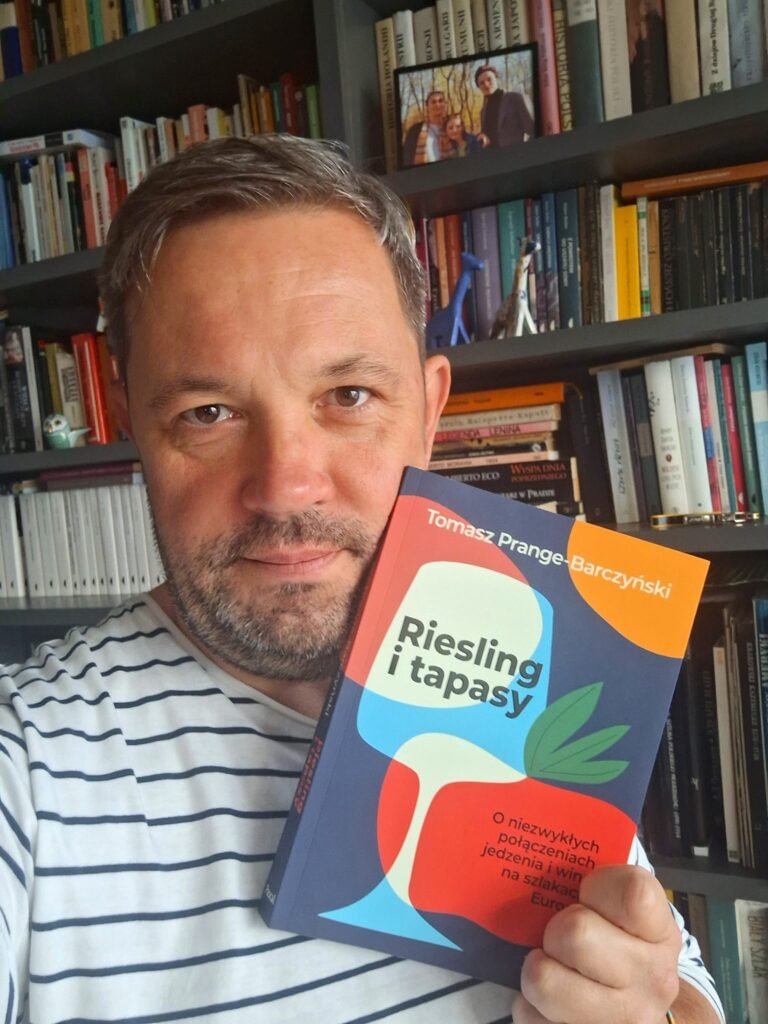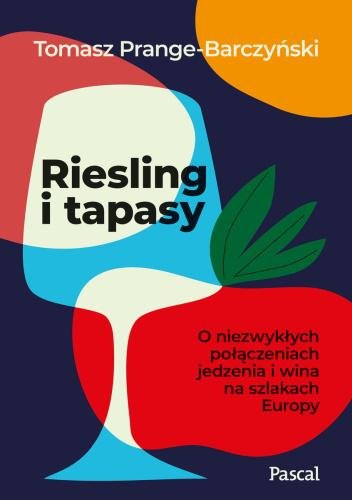Wine Travel Awards 2025–2026: Fifth Anniversary Highlights
On December 15, 2025, the Fifth Anniversary Edition of the Wine Travel Awards (WTA) 2025–2026 will be launched. The Organizing Committee continues its exciting journey through the world of wine and gastronomic tourism, meeting remarkable personalities, businesses, and destinations that shape the global WTA community.
The formation of the WTA Jury this year is reaching its final stage. We are proud of every one of the outstanding professionals in the field of enogastronomy who have joined the committee. With great pleasure, we announce a new name – Christian Zechmeister (Austria). The rest of the jury members have once again decided to support our project, which eloquently demonstrates the stability of interest in wine tourism and the strength of the friendly community we have built across 45 countries worldwide. And we are confident that this number will grow further this year, as the season has only just begun!
Another exciting update is the change of location for the Award Ceremony. We are certain this news will pleasantly surprise our participants and partners, with details to be revealed soon.
At the same time, WTA remains committed to its presence at the world’s key professional wine arenas: ProWein, Wine Paris, and the London Wine Fair.
The Fifth Anniversary of the Wine Travel Awards marks a special milestone in the development of the international wine community. New names, new locations, and an unwavering dedication to the theme of wine tourism make this season even more intriguing and promising.
Wine Travel Awards Jury 2025–2026
The jury includes renowned professionals from the wine and wine tourism industry, among them:
Christian Zechmeister (Austria)

Christian Zechmeister, MA, is the Managing Director of Wein Burgenland, the official wine marketing organization representing one of Austria’s leading wine regions. Under his leadership, Burgenland has significantly expanded its global visibility and strengthened its reputation for producing high-quality red, white and sweet wines, including internationally recognized Blaufränkisch and noble sweet specialties.
With an academic background in communications and marketing, Christian Zechmeister has more than 20 years of experience in wine marketing, regional promotion, international trade relations and event diplomacy. He has successfully developed strategic partnerships with global wine events, tourism boards, and professional associations, helping to position Burgenland as a key player in European premium wine tourism.
Christian Zechmeister is a member of the Austrian Wine Marketing Board collaborative network, a regular expert contributor and speaker at international wine conferences, and a jury member at prestigious global wine competitions. He is committed to fostering innovation, sustainability, and excellence within the global wine community.
Wine Tourism in Austria (Burgenland): Wine tourism in Austria continues to thrive, with Burgenland positioning itself as a hub for premium experiences. The region has invested heavily in wine routes that combine tastings with cultural events. Each year, more than 250,000 wine tourists visit Austria, with Burgenland standing out for its Blaufränkisch reds and sweet wine specialities.
Marinela Ardelean (Romania)
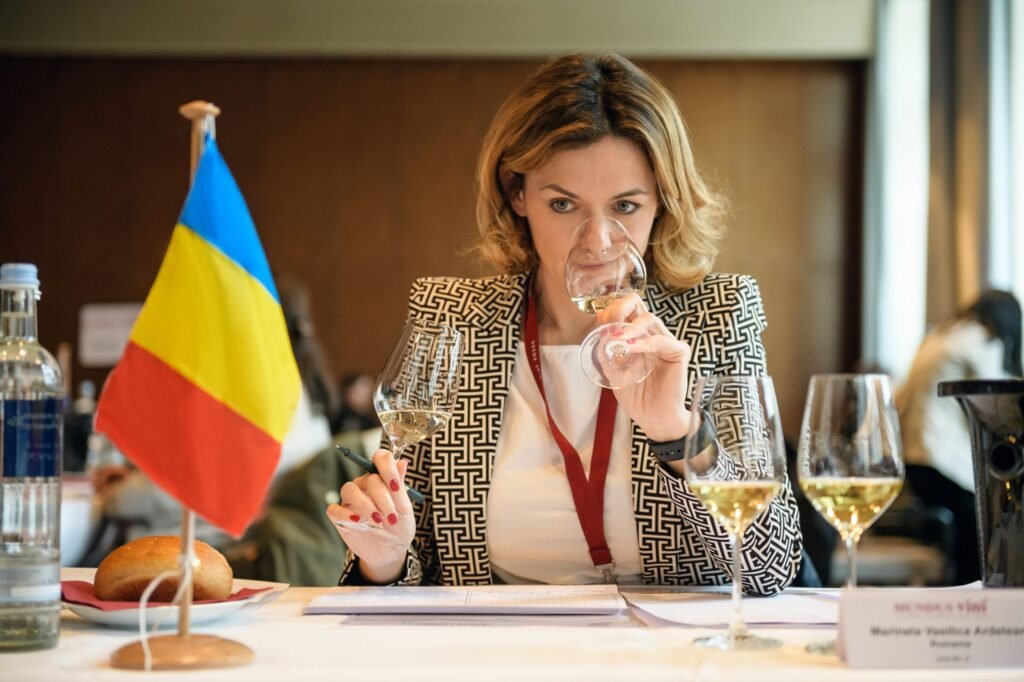
Marinela Ardelean holds an Executive MBA degree and a Doctor of Philosophy (PhD) in Marketing. A global expert in wine and spirits, she is one of the most renowned promoters of Romanian wines. She has a number of diplomas in the fields of winemaking and business.
She is the organizer of the RO-Wine Festival – the International Wine Festival of Romania, which became the first Romanian indigenous wine festival focused exclusively on the premium and luxury wine segment.
She is also the author of a book that pairs Romanian wines with Italian cuisine, demonstrating an innovative approach to intercultural culinary combinations and highlighting her deep commitment to Italian culture.
Among her awards:
- Winner of the “Best Romanian Sommelier Award” in 2014.
- Laureate of the Gourmand Drinks Awards in 2015.
- Honored at the CONAF Gala Conference “Women in Economy – Day by Day Heroes” in 2023.
Wine Tourism in Romania:Romania’s wine tourism is gaining momentum, particularly in Dealu Mare and Transylvania. Festivals such as RO-Wine have become central to the country’s appeal, drawing international visitors and showcasing premium wines. Increasingly, wine tours are integrated into broader gastronomic and cultural itineraries, helping Romania establish itself on the European wine tourism map.
Dr. Matthew Horkey (USA)
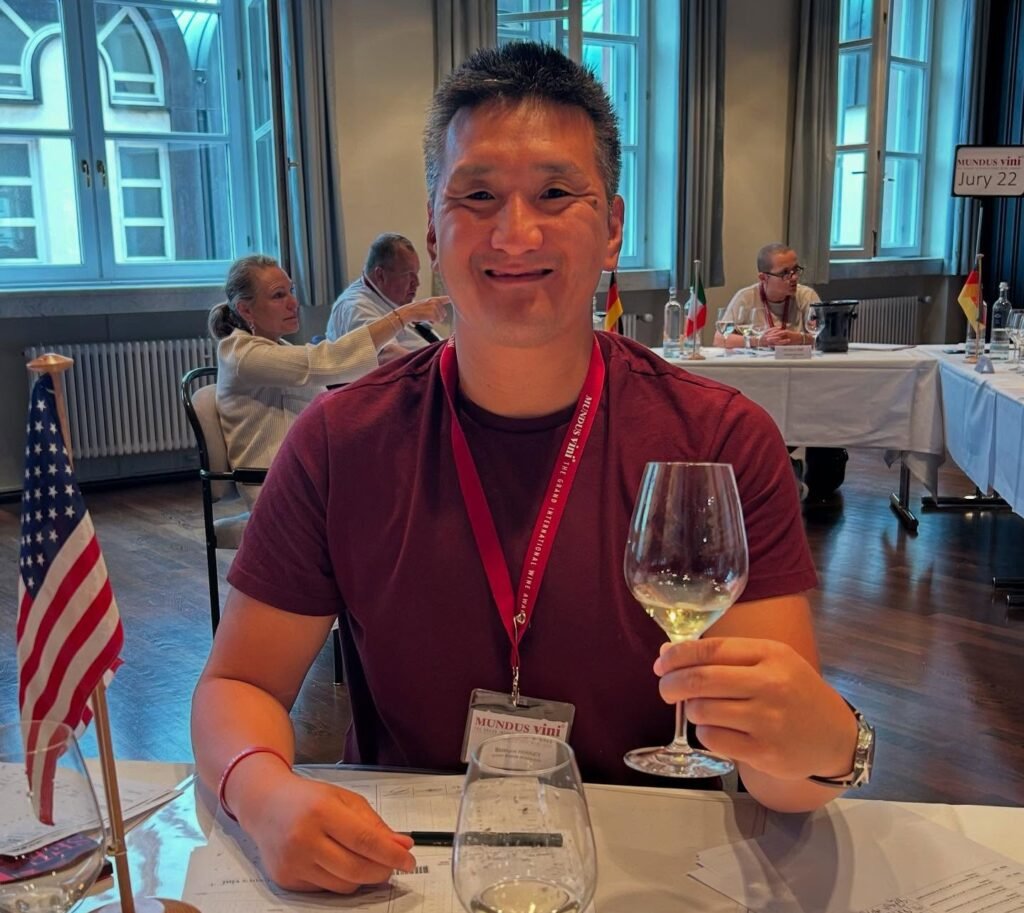
Dr. Matthew Horkey is a renowned wine expert, author, and founder of a popular wine channel on YouTube.
Matthew Horkey is the author of three books on wines, hundreds of articles, and thousands of videos, which regularly attract dozens and sometimes hundreds of thousands of views from wine lovers around the world. His motto is “Bringing FUN back to the world of WINE!”
He serves on the juries of many international wine competitions and tastes thousands of wines from across the globe each year. He is currently traveling the world full-time, continually discovering new regions, wineries, grape varieties, and wine styles for himself and his followers.
An experienced public speaker, he’s been a guest speaker at the American University of Rome, Life University, and various companies, including Microsoft, TripAdvisor, Norton Rose, and JP Morgan.
Wine Tourism in United States (California, Oregon, Washington): The United States remains a global leader in wine tourism. California alone generates more than $20 billion annually from wine-related travel, with Napa Valley welcoming over three million visitors each year. Beyond California, Oregon and Washington are attracting new waves of tourists, thanks to their distinctive terroirs and boutique wineries.
Dr. Ricardo F. Nunez (Argentina)
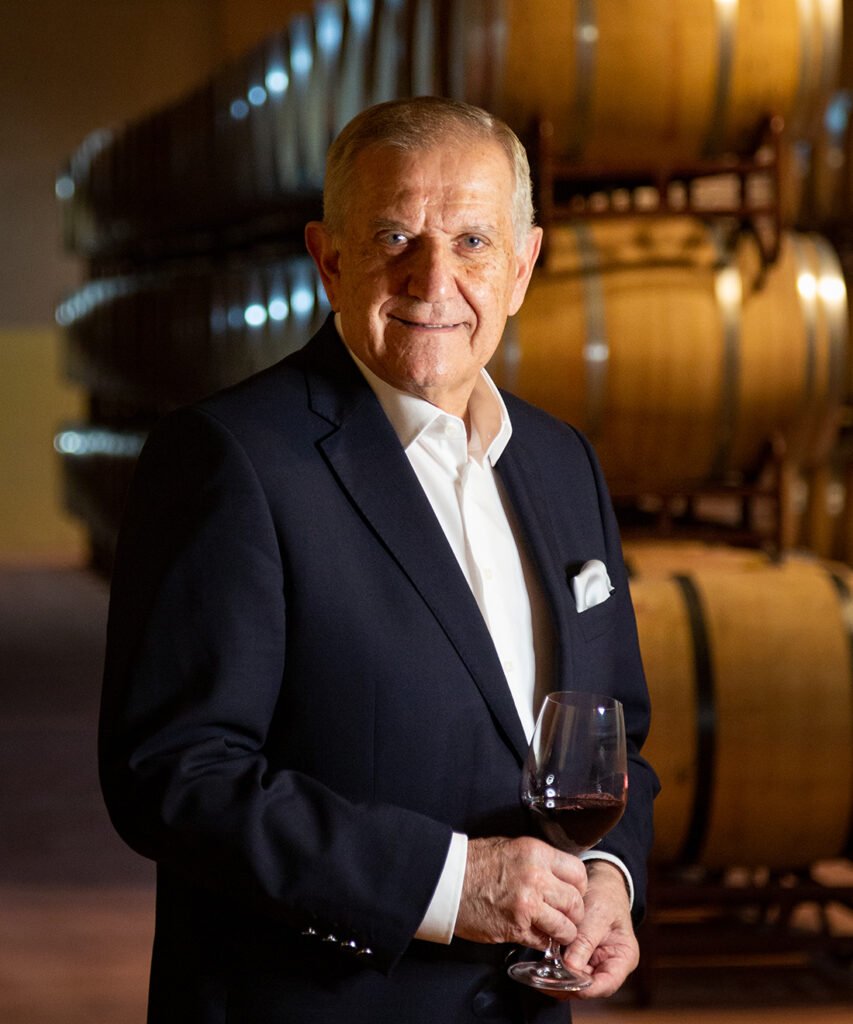
Dr. Ricardo F. Nunez is the head of the international group of companies Vinos de La Luz, which unites wineries in Argentina, Spain, Italy, the United States and Ukraine. He was born in Argentina. As a grandson and son of winemakers, he grew up in the vineyards of the Andean Cordilleras and explored every corner of the Uco Valley. Dr. Nunez is an investor participating in the development of the wine-growing market of Ukraine, also thanks to his new company Big Wines. Dr. Nunez participates in the world’s leading annual conferences and international wine competitions and is actively involved in the development of winemaking. In 2025, he received the OIV Merit Award for his work in strengthening ties and integrating Ukrainian winemaking into the global professional community.
Wine Tourism in Argentina:Argentina’s Mendoza region, particularly the Uco Valley, is a magnet for wine lovers, drawing more than one million visitors annually. Wine tourism here blends tastings with eco-tourism and mountain adventures, offering a unique combination of culture and landscape. The country’s focus on premium Malbec and innovative wine tourism programmes has strengthened its global reputation.
Wine Tourism in Spain: Spain invites travellers to savour its legendary wine routes – from the rolling vineyards of Rioja to the sparkling cava cellars of Catalonia. Each glass is steeped in centuries of tradition, offering not just flavour but a journey through the soul of Iberian culture.
Wine Tourism in Ukraine: A New Authentic Destination Revealing Europe’s Gastronomic Treasures. Despite Russia’s ongoing military aggression, Ukraine is quietly carving out a reputation as one of Europe’s most intriguing new wine destinations. Both domestic and, perhaps surprisingly, international wine tourism are flourishing. From the distinctive terroirs of Transcarpathia, through the Danube vineyards of Bessarabia, to the artisan estates of the Kyiv region, new routes are emerging for wine enthusiasts eager to explore. Over the past three years, the country has seen the opening of 70 new wineries – almost all of them small-scale, craft producers – underscoring a remarkable growth in Ukraine’s wine tourism sector.
Richard Bampfield MW (United Kingdom)
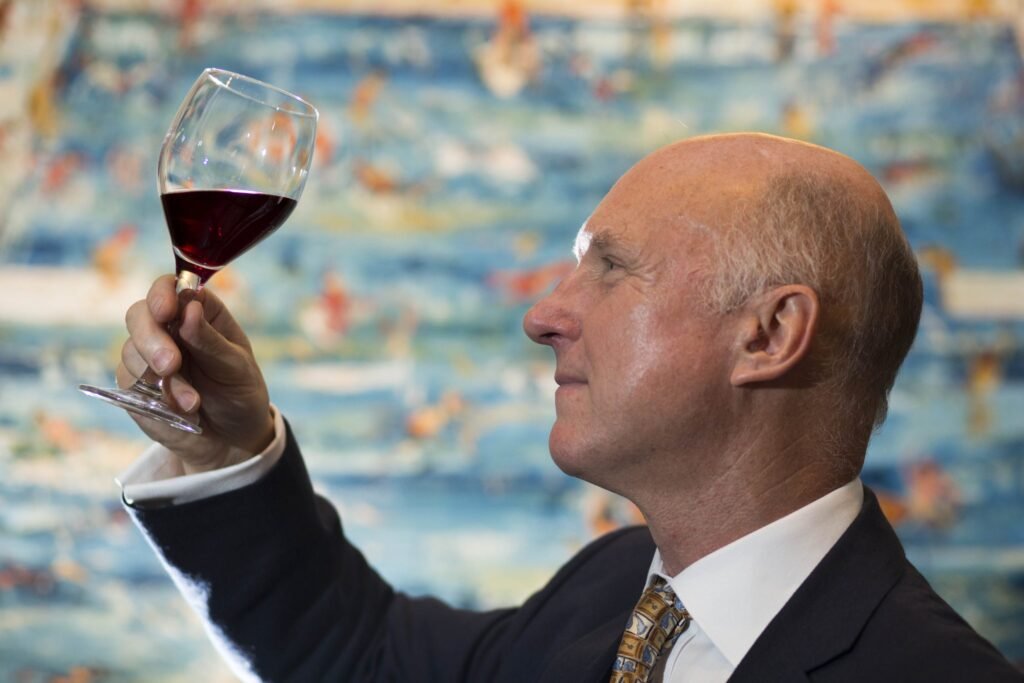
Wine expert and consultant Lidl, Albert Bichot (Burgundy), Santa Rita Estates (Chile) and Château Brown (Bordeaux).
Richard Bampfield MW – Master of Wine with a rich background in international wine education and consultancy. He is a profound expert, writer and is regarded as an influential figure in wine commentary and evaluation. His early career in retail paved the way for a deeper involvement in the wine business, especially when he was managing Brown Brothers’ European operations. Richard advises numerous clients, including wine producers and retailers. He is a fervent advocate for sustainability, contributing to global initiatives such as the Sustainable Wine Roundtable, which aims to foster more collaboration between all links in wine’s value chain.
Wine Tourism in United Kingdom:Wine tourism in the UK is expanding rapidly. In 2024–2025, vineyard visits rose by 55 per cent, with 1.5 million recorded visits last year. English sparkling wine has become a major attraction, and wine tourism now accounts for around a quarter of vineyard revenues. Sustainability initiatives are also shaping the industry, appealing to environmentally conscious travellers.
Paul Wagner (USA)

Senior Wine Tourism Consultant for Expedia Cruise Ship Centers. Co-host at “Bottle Talk With Rick and Paul”. Adjunct Instructor, MacPherson Distinguished Teacher at Napa Valley College.
Paul Wagner is the distinguished leader in the wine industry, celebrated for his strategic acumen, marketing innovation, and extensive involvement in wine tourism and education. He has been an instructor for Napa Valley College’s Viticulture and Winery Technology Department for more than thirty years. He is also a guest lecturer at many universities, such as the Wintour MBA program in Europe, OIV Wine Marketing Master Class at UC Davis, and the Culinary Institute of America at Greystone. Paul Wagner now works as a Senior Advisor, Wine Tourism for Expedia Cruise Ship Centers. As the founder of Balzac Communications & Marketing, he was highly influential in boosting global wine brands through creative promotional campaigns. His book, “Wine Marketing & Sales,” co-written with Liz Thach and Janeen Olsen, addresses the complexities of a saturated market and sets industry benchmarks.
In 2024–2025 he hosted Mediterranean wine cruises, including:
- The Italy & Greece Wine Cruise Adventure aboard Oceania Allura, in partnership with the American Wine Society.
- The Athens to Barcelona Wine Cruise aboard Oceania Riviera, a 10-night voyage featuring wine seminars, tastings and exclusive wine dinners.
Current wine tourism data on cruises (2025):
- According to the Cruise Lines International Association, the cruise industry will welcome 37.7 million passengers across 310 ships in 2025.
Wine cruises are now a distinct segment, combining tastings, educational lectures and gastronomic tours, and are a growing driver of global wine tourism.
Stéphane Badet (France)

A lecturer at ISVV – the Institute of Vine and Wine at the University of Bordeaux. A professor, wine economist, and expert for the Ministry of Agriculture and Food Sovereignty of France. He teaches at the Institute of Vine and Wine Science (ISVV) at the University of Bordeaux, one of the world’s leading educational institutions, and is also a lecturer at Bordeaux Sciences Agro.
Stéphane Badet specializes in wine economy, industry management, business, marketing and tourism for many years, has extensive experience as an expert and consultant in various cooperation and sustainable development programs in the field of winemaking around the world, together with Interco Nouvelle-Aquitaine, UN-FAO, Ministry of Agriculture and Food of France, French and German embassies. Since the first year of the WTA’s founding, Stéphane Badet has been an honorary member of its jury.
Wine Tourism in France: Bordeaux remains the capital of wine tourism. In 2025, the region is offering eco-villas and curated wine tours in Saint-Émilion, Cognac and along the Atlantic coast. Every second, 21 bottles of Bordeaux wine are sold worldwide, underscoring its global appeal. Equally popular is Burgundy, an oasis of premium winemaking that last year reaffirmed its status as one of the world’s most prestigious wine regions. It attracts visitors with a blend of wine tastings, historic landmarks and gastronomic experiences. The growing demand for private tours and Grand Cru routes highlights the steady expansion of wine tourism across the region.
A major boost has come from the new museum, Cité des Climats et vins de Bourgogne, which opened in 2023 with three sites in Beaune, Chablis and Mâcon. Dedicated to the culture, history and heritage of Burgundy, the museum celebrates the region’s unique “climats” – vineyard parcels inscribed on UNESCO’s World Heritage List in 2015. In 2025, the museum won the Wine Travel Awards in the category Education in Enotourism (Cultural Mission).
According to local tour operators, wine tourism in Burgundy is growing annually by 12–15 per cent. The average cost of a wine tour ranges from €250 for vineyard walking routes to €2,990 for full gastronomic programmes including accommodation and dining. Most visitors opt for five-to-seven-day itineraries, combining visits to several wine estates with tastings.
Prof. Dr. Prof. h.c. Gergely Szolnoki (Germany, Greece)

Gergely Szolnoki – Professor of Market Research at Geisenheim University (Germany) and honorary professor of Wine and Beverage Management & Marketing at the University of West Attica (Athens/Greece). His research fields cover consumer behaviour, communication and social media, organic wines, market analysis and wine tourism. In addition to his scientific activities, Gergely is a delegated expert in the International Organisation of Vine and Wine (OIV), where he leads an expert group, as well as in Great Wine Capitals Global Networks. Since the beginning of the unique Wine Travel Awards project activity, Professor Szolnoki has been its respected judge.
Wine Tourism in Germany (Rheingau, Mosel, Pfalz):Germany’s wine regions welcomed more than three million visitors in 2025. Rheingau, Mosel and Pfalz are particularly popular, combining vineyard tours with cultural festivals. The country’s emphasis on Riesling and organic wine production has made it a key destination for wine enthusiasts seeking authenticity and sustainability.
Wine Tourism in Greece (Attica, PeloponneseSemeli Estate, Crete):Greeceis integrating wine tourism into its broader cultural and gastronomic offerings. Attica, the Peloponnese and Crete are leading the way, with tours that combine vineyard visits, local cuisine and ancient heritage. The country’s boutique wineries are increasingly recognised for their role in diversifying Europe’s wine tourism landscape.
Per Karlsson (Sweden, France)

Per Karlsson is an an internationally awarded, professional wine and travel writer and photographer. As co-founder of BKWine, together with Britt Karlsson, he is a wine journalist on BKWine Magazine and Forbes.com, editor of BKWine Magazine, and co-owner of BKWine Tours, one of the world’s leading specialist wine tour operators active across Europe, South America, South Africa and New Zealand. As such, he spends a large part of the year travelling in wine regions visiting vineyards and meeting winemakers. With Britt he has co-authored thirteen wine books (including the award winning “Biodynamic, Organic and Natural Winemaking: Sustainable Viticulture and Viniculture” and the 2026 forthcoming “The Wine for the Future” on sustainability). Per Karlsson is also consultant and speaker on wine tourism and a wine competition judge and taster in many international and national wine competitions. Per Karlsson has been a distinguished jury member of the Wine Travel Awards since its inaugural edition.
Wine Tourism in Sweden:Sweden’s wine tourism is still emerging but has gained attention in regions such as Skåne and Gotland. These northern terroirs offer a distinctive experience, appealing to travellers interested in innovative viticulture and unique climates.
Yang Shen (China, New Zealand)
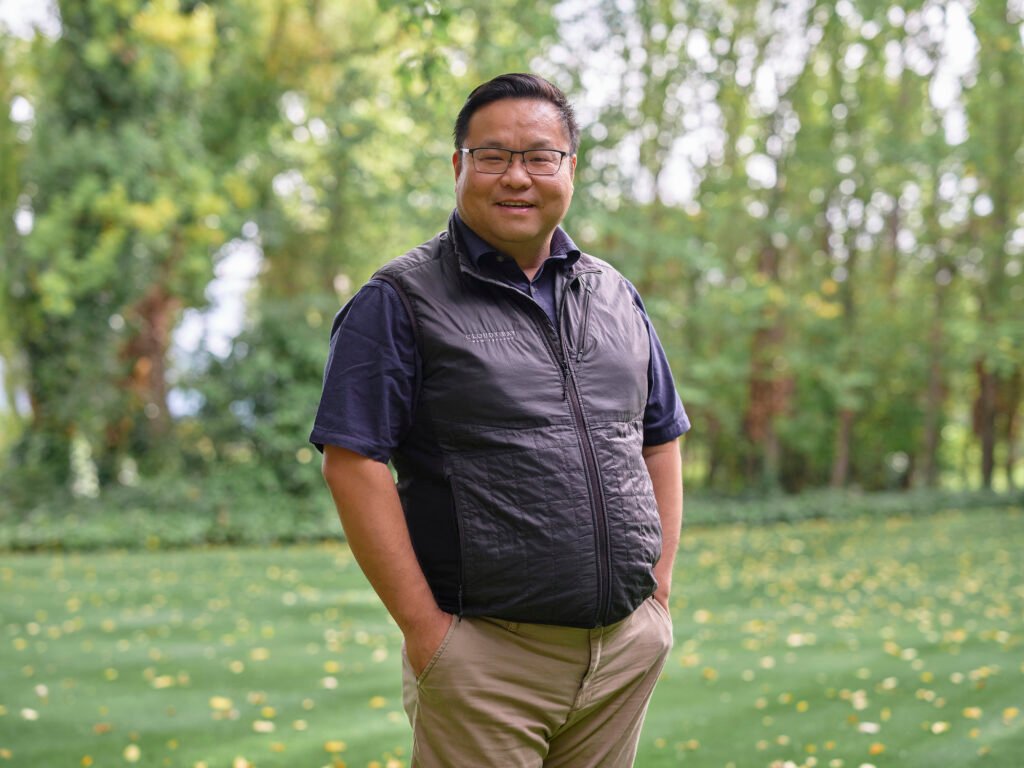
Mr. Yang Shen – Estate Director of Cloudy Bay (one of New Zealand’s most outstanding wineries, part of the LVMH group – the world leader in the luxury industry). Born in China, he studied oenology at the University of Montpellier and wine marketing at the Montesquieu University Bordeaux, although his introduction to fine wine had begun long before that, in his native Chengdu. Throughout his career, Mr. Shen held top positions at Moët Hennessy, Diageo and Chandon China. “My mission at Cloudy Bay is to create wines of exceptional quality that highlight and express New Zealand’s distinctive terroir.” For the second year, Mr. Yang Shen has been an honorary member of the WTA jury.
Wine Tourism in New Zealand: New Zealand boasts around 700 wineries across 13 appellations. Marlborough, Hawke’s Bay and Central Otago are the most visited regions, offering immersive tours that highlight the country’s distinctive terroir. Wine tourism has become a vital part of the economy, with vineyards covering more than 40,000 hectares.
Wine Tourism in China: China’s wine tourism is developing rapidly, particularly in Ningxia and Shandong. These regions are combining wine routes with cultural events and gastronomy, positioning China as an emerging player in global wine tourism.
Felicity Carter
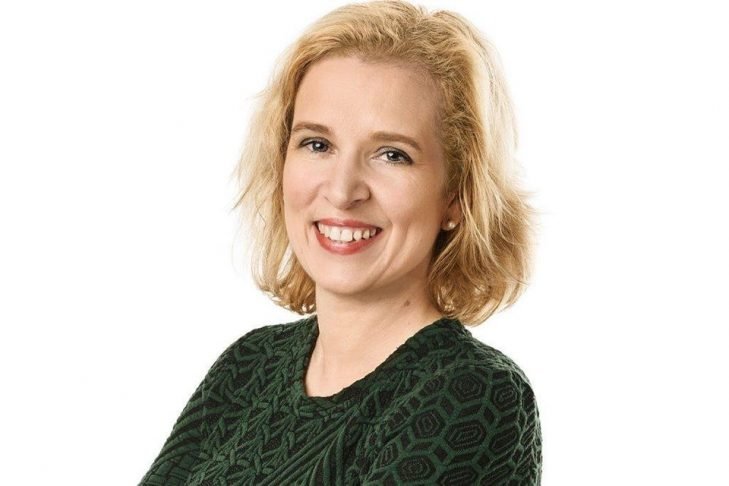
Based in Europe, Felicity Carter is the founder of Drinks Insider – a podcast, newsletter, and consultancy offering analysis and insight on the global drinks business. She is also Editorial Director of Areni Global, the London-based fine wine think tank, and a guest lecturer at the University of Cape Town’s Graduate School of Business. Previously, she was the founding Executive Editor of The Drop at Pix, an editorial consultant for Liv-ex, and Editor in Chief of Meininger’s Wine Business International, which she built into the world’s leading wine trade publication. Her writing has appeared in The Age, Sydney Morning Herald, and The Guardian US. A sought-after keynote speaker on global drinks trends, wine tourism, and the anti-alcohol lobby, she has judged wine competitions across Europe and was named a 2024 Industry Leader by WineBusiness Monthly and winner of the 2025 67 Pall Mall Global Communicators Award for Audio.
International Wine Tourism: Global wine tourism has become one of the fastest-growing sectors of the drinks industry. According to the Global Wine Tourism Report 2025, more than 47 countries and 1,300 wineries now offer structured wine tourism programmes. The sector is expanding at an annual rate of 10–12 per cent, driven by sustainability, the integration of wine tours with gastronomy and cultural events, and the rise of new destinations in South America, China and Georgia. Europe remains the anchor of global wine tourism, but the internationalisation of the market is reshaping the way wine regions present themselves to visitors.
Robert Joseph (United Kingdom)

A renowned British wine expert, technology consultant, winemaker, and editorial consultant for Meininger’s Wine Business International. Author of numerous bestselling books, wine critic, and founder of several wine competitions.
Robert Joseph is one of the most experienced and influential figures in the wine world. He is a consultant, wine brand co-creator and co-owner, associate editor, and author with over 30 years of experience in the wine industry. His mission is to share his knowledge, insights, and expertise with the global wine community and beyond.
Robert Joseph is an award-winning author of more than 30 books on wine. His two most recent works are Wine Thinking and The Wine People. He also publishes weekly newsletters on LinkedIn (Wine Advocate) and Substack (Wine Thinking).
As a public speaker, Robert Joseph regularly delivers keynote presentations at high-level industry events around the world and lectures at leading business schools.
Robert Joseph has been a distinguished jury member of the Wine Travel Awards since its inaugural edition, a speaker at WTA events, and the host of the WTA Ceremonies.
Food and Wine Tourism in the UK: Britain’s wine tourism sector is expanding rapidly. In 2025, the market was valued at $15.5 billion, with forecasts suggesting it could reach $43.5 billion by 2035, reflecting a compound annual growth rate of 10.8 per cent. Vineyard visits rose by 55 per cent between 2024 and 2025, with 1.5 million recorded visits last year. English sparkling wine has become a major draw, and wine tourism now accounts for roughly a quarter of vineyard revenues.
Food and Wine Tourism in Georgia: Georgia continues to position itself as the “cradle of wine”. Tourism revenues in 2025 are projected at $4.6 billion, with wine tourism playing a central role. Kakheti has emerged as the country’s premium wine tourism hub, and international arrivals in the first quarter of 2025 exceeded 1.3 million. Wine tourism is growing at 5–6 per cent annually, while wine exports rose by 7 per cent this year. Visitors are drawn to Georgia’s unique qvevri winemaking tradition and the integration of wine tours with traditional cuisine, reinforcing its reputation as a distinctive destination for enogastronomy. By the way, in Georgia, with the involvement of Robert Joseph and Vladimir Kublashvili at the Khareba winery, a unique range of blended wines under the K’AVSHIRI label is produced. These wines were showcased at the tasting during the London Wine Fair ceremony Wine Travel Awards in May 2025.
Join us for the fifth edition of the Wine Travel Awards – embark on an unforgettable journey through the world of wine tourism, where every glass tells a story.
⇒ Join our social networks ⇒ Optimistic D+ editors will take this as a compliment.
⇒ Every like is taken as a toast!
On December 15, 2025, the Fifth Anniversary Edition of the Wine Travel Awards (WTA) 2025–2026 will be launched. The Organizing Committee continues its exciting journey through the world of wine and gastronomic tourism, meeting remarkable personalities, businesses, and destinations that shape the global WTA community. On December 15, 2025, the Fifth Anniversary Edition of the Wine Travel Awards […]

